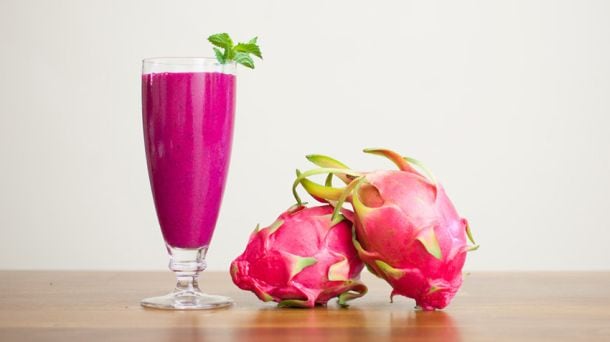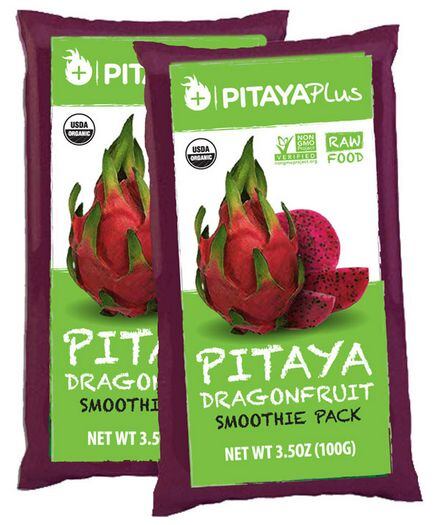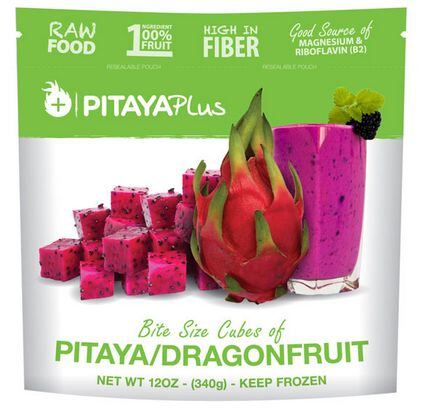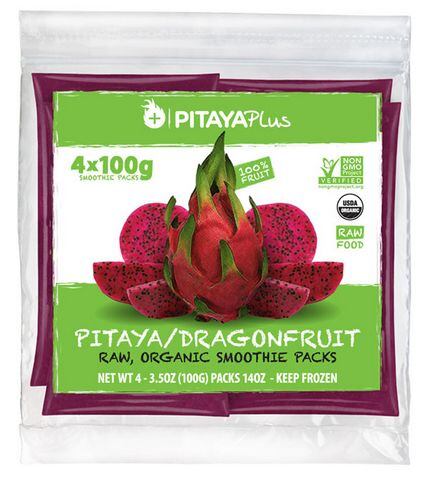And so far, things have gone rather well for Casano, who spent seven months in Nicaragua with non-profit Agora Partnerships in 2008 (after it became clear that he hadn’t picked a great time to launch a career in investment banking), fell in love with a fruit that “looked like a flaming pink artichoke”, and upon his return, set about trying to bring it to the US under the brand name Pitaya Plus.
As it wasn’t possible back then to import the fresh fruit, Casano and Pitaya Plus co-founder Ben Hiddlestone set about building the infrastructure to pulp and freeze organic Pitaya at source and pack it into frozen smoothie packs to be shipped over to the US to supply juice bars and later, grocery stores.
The two started selling the smoothie packs out of the back of a Prius in California in February of 2011, and soon attracted the attention of larger juice bar chains and grocery retailers.
And pretty soon, it was clear they had a hit on their hands, Casano told FoodNavigator-USA: “The frozen smoothie packs have been generating triple-digit growth for the past three years; they’re now in around 1,200 grocery stores from Whole Foods and Sprouts to Safeway and Wegmans, and 1,000 juice bars and we’re set to launch in the largest juice bar chain in America in January.
"We’re also talking to some food and beverage manufacturers about selling them Pitaya as an ingredient for use in a variety of products.”

People are moving from juices to smoothies because they want fiber
Meanwhile, frozen Pitaya cubes – sourced from Vietnam – hit the market in March, he added: “If you’ve not tasted Pitaya, it has the look of watermelon, the earthiness of beets and the sweetness of strawberries.”

And retailers – who are seeing strong growth in frozen fruit and smoothie packs - can’t get enough of the low-sugar fruit, which turns everything hot pink, and makes for awesome Instagram recipe pics, he said.
“I think lots of people are moving from juices to smoothies because they don’t want all the fiber removed from their fruits and vegetables, and a lot of people are making smoothies at home with frozen fruit from grocery stores. For us, it was a case that a lot of people had tried Pitaya at juice bars and cafes and then started looking for it at the grocery store, and asking retailers to stock it.”
Ready-to-drink beverages didn’t work
However, not everything Casano has touched has turned to gold (or flaming pink), with his ready-to drink Pitaya-based beverages – launched in early 2011 and withdrawn in early 2013 – proving less successful, although he still reckons the concept has legs.
“The drinks [10.5oz flash pasteurized ready to drink beverages with pitaya, coconut water and other ingredients] were expensive to produce, and to get a price point that worked at retail, we had to cut the Pitaya with coconut water and it ruined the flavor.

"Another challenge was that the product was flash pasteurized just at the time when all the HPP products were coming out, so it was a case of not having the right product, and bad timing.”
Creating jobs in Nicaragua
Aside from introducing Americans to something novel and nutritious (Pitaya is high in antioxidants and fiber and, more unusually for a fruit, magnesium), Casano is most proud of the fact that he is supporting small farmers in Nicaragua and creating new jobs for people, many of whom are single mothers, he said.
This is also something that appeals to consumers and retail partners such as Whole Foods, who are no longer just looking at the product, but where it was produced and by whom, he added.

“We started by working with a handful of farmers and now more than 300 have gone through the USDA organic certification process, and have the reassurance that we are going to buy their fruit. We also work with them to help them buy [organic-approved] fertilizers, which is helping them significantly increase yields.”
If you ask me what keeps me awake at night, it’s planning and forecasting
As for financing the business, to date, the San Diego-based firm has received two rounds of funding from a single angel investor, but Casano is now at the stage where he is entertaining securing additional capital from institutional investors.
The biggest challenge, however, is managing the supply chain and trying to plan ahead, said Casano, who travels to Nicaragua about four times a year and says his business probably accounts for 95% of the frozen Pitaya market in the US.
“If you ask me what keeps me awake at night, it’s planning and forecasting. We’re also in the second year of drought in Nicaragua and while it hasn’t affected the total amount of Pitaya harvested it has affected timings, so that just makes things more challenging.
"In a normal harvest year there is a lot more predictability and we would harvest the fruit almost every five weeks. However the drought is causing the plants to fruit in 'tidal waves'."
